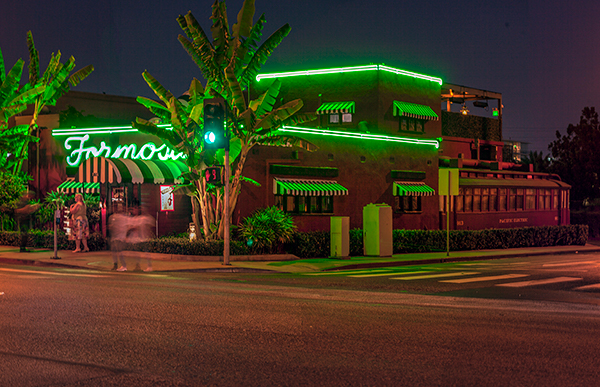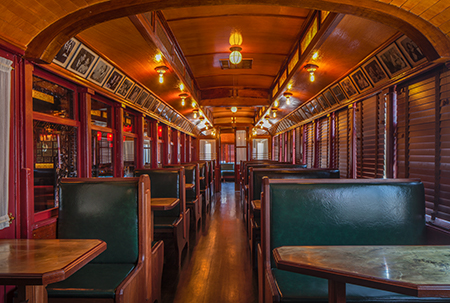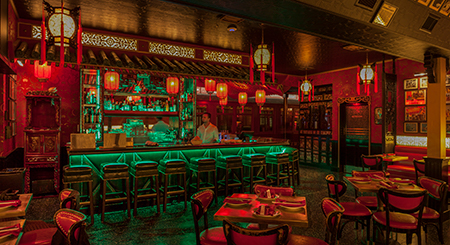No video provided.
The Formosa

Continuing Discover Hollywood’s articles on favorite historic restaurants, following the venerable former Disney favorite, Tam O’Shanter, dating back to 1926, and Hollywood’s oldest restaurant Musso & Frank’s which celebrated its 100th Anniversary last year, we add to this list the incomparable Formosa Café.
To say that The Formosa has a dark and speckled past would be an understatement. Situated at Formosa Avenue and Santa Monica Blvd., it withstood encroachment by the adjacent West Hollywood Gateway shopping center. Founded in 1925 by prize-fighter Jimmy Bernstein, it became a popular watering hole for nearby United Artists Studio which evolved into Samuel Goldwyn Studio, then Warner Bros. and now is known as “The Lot.”

Around 1939, Lem Quon went into partnership with Bernstein, eventually taking full ownership in the mid-70s, remaining in the family with Quon’s grandson, Vince Jung, managing. Its history includes a long list of celebrity imbibers from Humphrey Bogart, Frank Sinatra and Ava Gardner to Bono and Johnny Depp. Adding to its mystery, rumored mob connections included a book making operation and names like Bugsy Siegel and Mickey Cohen. Mystique and film noir personified.
Thanks to restauranteurs, Bobby Green, Dimitri Komarov, and Dmitry Liberman of the 1933 Group, not only was this classic Chinese with film noir overtones brought back to life, their attention to detail following its demise is remarkable. This project wasn’t their first foray into restoration. They’ve tackled the Highland Park Bowl and the barrel-shaped Idle Hour bar in North Hollywood. Capitalizing on a historic theme, the team has developed newer spots across the city: Harlowe in West Hollywood, Bigfoot Lodge in Atwater Village and Oldfield’s Liquor Room in Culver City. These savvy entrepreneurs know what that their millennial and Gen-X clientele prefer.

In the National Historic Trust’s Preservation Magazine, an article about this project by Lynell George detailed the step-by-step process that was taken to resuscitate the restaurant. Swinging into action following the acquisition of the restaurant property, The Los Angeles Conservancy encouraged the owners to apply for a preservation grant to restore a vintage 1906 Pacific Electric trolley car that had been added around 1940 to serve as additional dining space.
In her article, George writes “Working with designers, master craftspeople, historians, fabricators, mixologists, and chefs, the 1933 Group, bit-by-bit, is giving back parts of our specific past to history-hungry Angelenos. Re-energizing the Formosa meant a lot more than restoring the familiar colors and photographs. Green and team wanted to dig deep by telling and honoring a story about the building, its neighborhood, and its colorful past. Two years and a little over $2 million later, they’ve unpacked a gold mine of hidden history, and the Formosa is ready for its close-up.”

As if their painstaking research and collection of memorabilia from the original Formosa wasn’t enough, thanks to Vince Jung, there’s a new piece d’resistance—another beloved piece of Los Angeles’ historic fabric. Again, George writes,”Pulling the room—and the story—together is the ornate backbar from another one of L.A.’s vanished nightspots, Chinatown’s Yee Mee Loo restaurant. The carved wood piece is now one of the elegant focal points of the Formosa’s back room. It was made as a prop shrine for the 1937 film The Good Earth and had somehow landed in Chinatown. After Yee Mee Loo closed, the shrine was installed at another area restaurant, Cinnabar, until it shuttered in 2005.”
Thanks to the folks at 1933 Group, once again we can experience the allure and the mystery of The Formosa and revisit a lost and beloved Chinatown treasure.